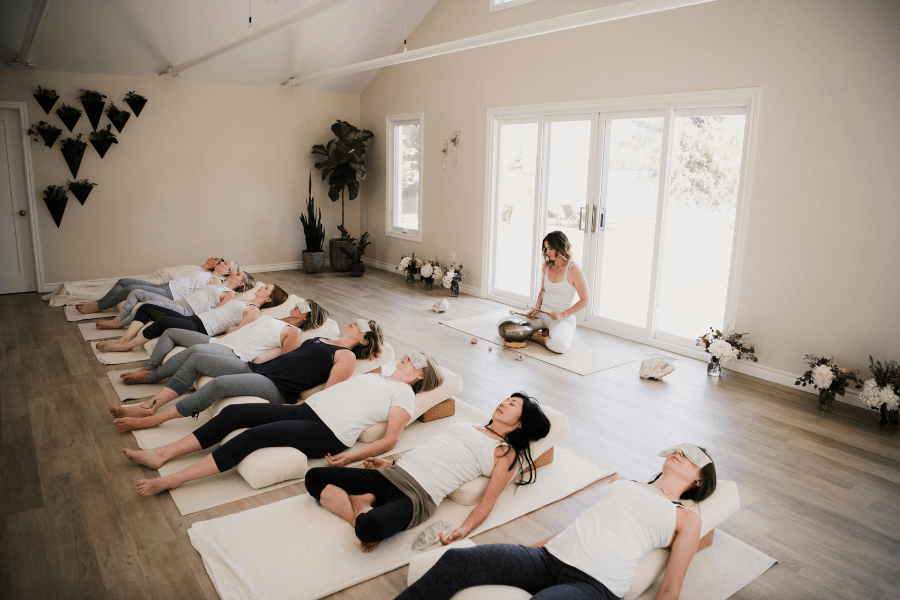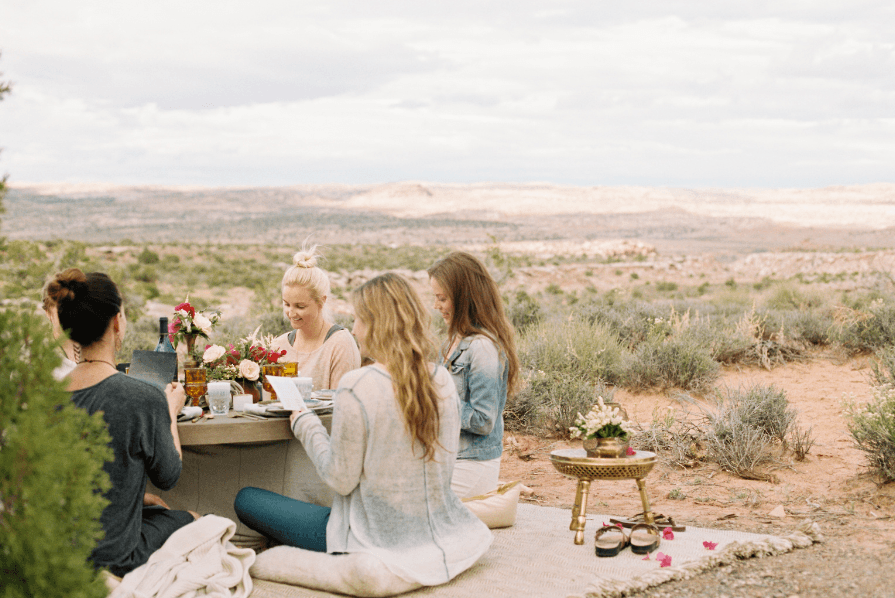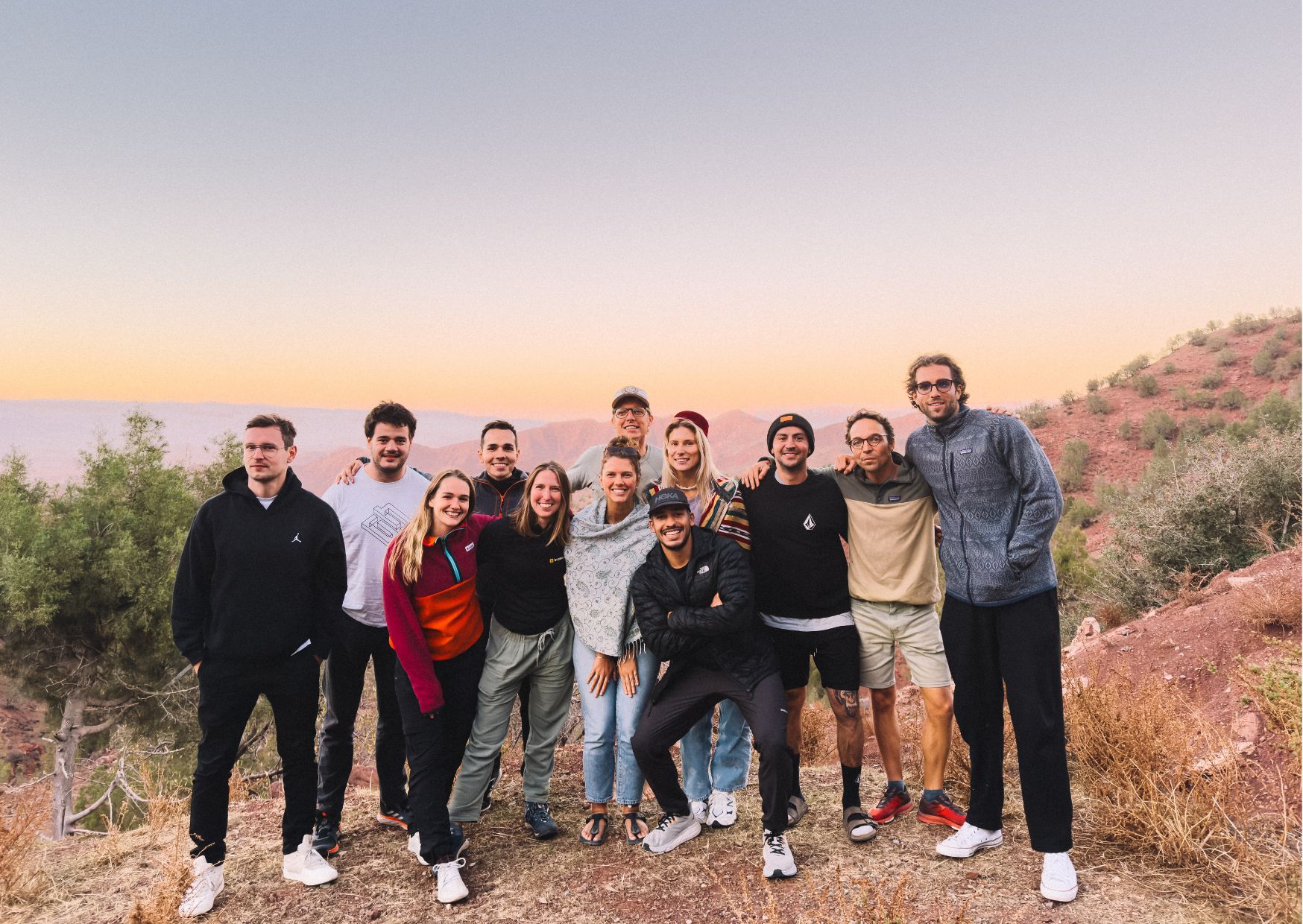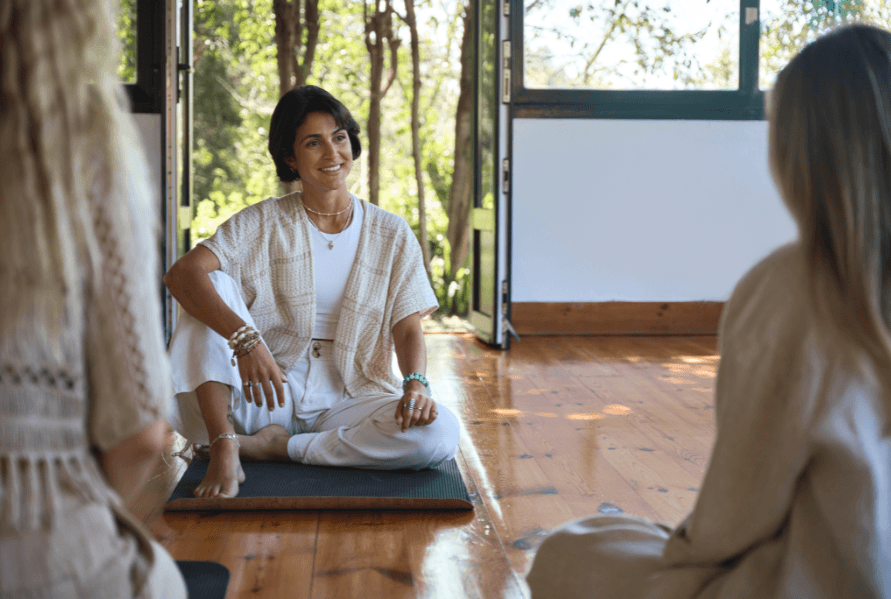Updated: 20 Dec 2024
Creating a great retreat itinerary requires both careful planning and the flexibility to cater to diverse needs. An effective itinerary sets the stage for transformative experiences, guiding attendees through a thoughtful curation of activities designed to rejuvenate both the mind and body.
To build a retreat itinerary that makes an impact on guests, you need to work from the unique dynamics of your audience and the setting. Each element, from the duration of sessions to the inclusion of free time, plays a critical role in ensuring that participants leave feeling enriched. Below, we’ll break down everything you should consider when putting together a wellness retreat schedule.
Retreat Itinerary Example: 3-Day Yoga Getaway
Before we dive into how to create an exceptional retreat itinerary, let’s go over what a sample itinerary looks like. Rather than filling up every second of the day, you want to leave space for organic experiences that arise during the retreat. Take a look at the yoga retreat schedule below to get an idea of what should be included in your wellness retreat program.
Day 1:
Morning:
Arrival and check-in
Brunch and orientation session introducing the retreat facilities, the schedule, and the instructors
Early Afternoon:
Guided meditation session to set intentions for the retreat
Group lunch to get to know each other
Late Afternoon:
Travel recovery vinyasa flow
Evening:
Group dinner
Opening circle by a bonfire, where participants share goals and expectations
Day 2:
Morning:
Small hike to a sunrise yoga session at the lookout point
Healthy breakfast with a nutrition workshop
Early Afternoon:
Workshop on yoga philosophy and its application in daily life
Picnic lunch featuring locally foraged ingredients
Late Afternoon:
Optional activity: local cultural excursion or nature hike
Evening:
Cooking night with a guest speaker on holistic health
Restorative yoga session under the stars
Day 3:
Morning:
Aromatherapy yoga flow
Closing group meditation focusing on personal commitments post-retreat
Early afternoon:
Group lunch and reflection session
Late afternoon:
Farewell ceremony
Optional activity: individual consultations or massages
Designing Ultimate Retreat Itinerary
 Filling your retreat itinerary with diverse activities gives guests a rich experience.
Filling your retreat itinerary with diverse activities gives guests a rich experience.
If you want to build an enriching retreat itinerary, there is a lot to consider. You need to get specific about things like the goal of your retreat, your guest profile, the environment of your retreat, and more. Below are some of the key aspects to think about when cultivating a great retreat experience.
A Seamless Arrival
First impressions matter, so don’t just breeze over the arrival process in your retreat schedule. This is the time to set expectations for the retreat, go over your program, introduce instructors, and give tours of the facilities. And, more than just guests checking in, the arrival time is when you can start setting the tone and get participants in the right headspace for the rest of the retreat.
A warm greeting and a welcome drink can go a long way, but you may also consider offering a nice handwritten note in each room. You could also provide a prompt or a few questions for guests to reflect on during the retreat or a goal-setting worksheet for guests to use during their time.
Well-Rounded Activities
While it is important to stay true to the core purpose and goal of your retreat, diversifying the sessions you offer can provide a more full experience to guests. For example, in addition to hosting yoga classes, a yoga retreat may also hold guided meditation sessions or even a dance class to provide alternative ways to connect the mind and body.
When selecting the activities you’ll offer in your retreat itinerary, consider the profile of your participants and what they expect to get out of the retreat. If the program is aimed at relaxation and rejuvenation, then maybe a six-hour strenuous hike is not the right fit. And yet, this could be a great activity in a fitness retreat.
Thoughtful Downtime
Incorporating downtime into the retreat schedule is essential for a balanced experience. While structured activities are important, providing ample free time allows participants to process their experiences, relax, and explore their surroundings at their own pace. This leisure time is crucial for mental and emotional rejuvenation, enabling attendees to fully benefit from the retreat.
Community Building
Retreats often attract like-minded individuals. So each retreat presents an opportunity to build community and grow from diverse perspectives. When planning a retreat, create spaces and opportunities for people to connect, share experiences, and learn from each other.
Consider incorporating structured sharing sessions where participants can discuss their insights or challenges related to the retreat’s theme. This can make the retreat experience more impactful and memorable for everyone involved.
Nourishing Meals
Since retreats primarily aim to rejuvenate and enrich participants, it’s essential to include nourishing meals. While meals may not be the first thing that comes to mind when building a retreat itinerary, they can significantly impact the retreat experience. As such, ensure you schedule ample time for guests to enjoy mealtimes and invest in serving nutritious food.
A Lasting Impression
Retreats can be powerful, moving experiences. And whether participants experience impactful breakthroughs or just return home with a refreshed outlook, it is important to honor the weight of the experience accordingly.
Rather than just unceremoniously wrapping up and sending guests on their way, hold a closing session that gives space for attendees to be intentional about heading back into daily life. In some cases, this may be the most impactful moment of your retreat itinerary.
Other Things to Consider When Building a Retreat Itinerary
 Creating spaces for your guests to connect is part of a great wellness retreat schedule.
Creating spaces for your guests to connect is part of a great wellness retreat schedule.
Every retreat is unique and what works for one retreat program may not suit another. To create the best wellness retreat agenda for your specific offering, you’ll want to reflect on the specifics on your retreat. In addition to the points above, consider these details before finalizing your retreat itinerary.
Environment. The surrounding environment can make an immense impact on the overall retreat experience. And, while you can host a great retreat anywhere, you’ll want to consider the environment when planning retreat activities. For example, if you are in a city, you may not want to host rooftop meditation during the hours people commute to and from work.
Season. Take note of what time of year your retreat will occur. The sun may set and rise at different times, evenings might be much more brisk, or maybe you need to work around a rainy season. Considering seasonal changes will help you provide a better guest experience.
Budget. The price point you are selling your retreat for may influence the type of activities you include in your retreat itinerary. It is important to stay within your budget to ensure you run a successful retreat program.
Purpose. As highlighted throughout this article, it is key to stay true to your retreat’s purpose when creating your schedule. Guests book your retreat with certain expectations in mind based on your marketing, so you should always do your best to deliver on those ideas.
Group size. The size of your retreat is another element that might influence which activities will work best. If you have a small retreat group, sessions can be more intimate with plenty of time for all participants to get to know each other. However, if you are running a large retreat, you may want to break up into smaller groups for certain retreat activities.
Simplify Retreat Bookings with Bookinglayer
Once you have established your retreat itinerary, you are ready to start selling your retreat. And that is where Bookinglayer helps retreats thrive. Our all-in-one retreat management and booking software helps you automate daily tasks like guest communication and collecting payments.You can also design your own custom booking flow, creating a better retreat booking experience for both guests and organizers alike.
We knock hours off the time it takes to manage bookings each week so your team can focus on creating the transformative experiences that you’re known for. If you want to elevate your retreat and ease your mind, sign up for a personalized demo and discover what Bookinglayer can do for you.
Retreat Itinerary FAQ
What is a retreat session?
A retreat session refers to a single activity within the broader retreat itinerary. Depending on the type of retreat, a retreat session could be a yoga class, meditation workshop, personal coaching appointment, or many other activities.
How do I plan a retreat schedule?
To plan your retreat schedule, you will want to consider things like budget, environment, group size, and the purpose of the retreat. You want to make sure you offer a combination of enriching activities and downtime so guests leave feeling rejuvenated.
How to begin a retreat?
If you want to start a wellness retreat, you first need to determine the niche of your retreat. With this in mind, you can find a location, define your budget, and begin planning your retreat itinerary. The last steps will include marketing, processing bookings, and finally hosting your retreat.
Related articles

Hotel Upselling: Tips for Upselling Hotel Stays
Hotel upselling leads to more revenue and happier guests. Unlock the secrets of hotel upselling techniques in this article.

Bookinglayer Team Trip 2023
Our 2023 Team Trip was one for the books! Learn about our adventures and insights from Morocco.

How to Host a Retreat: A Guide to Retreat Planning
If you want to run a retreat business, follow these 12 simple steps on how to host a retreat. We'll also cover useful tools for hosting retreats.
Keep me in the loop
By subscribing to our newsletter you are notified about new product features.
